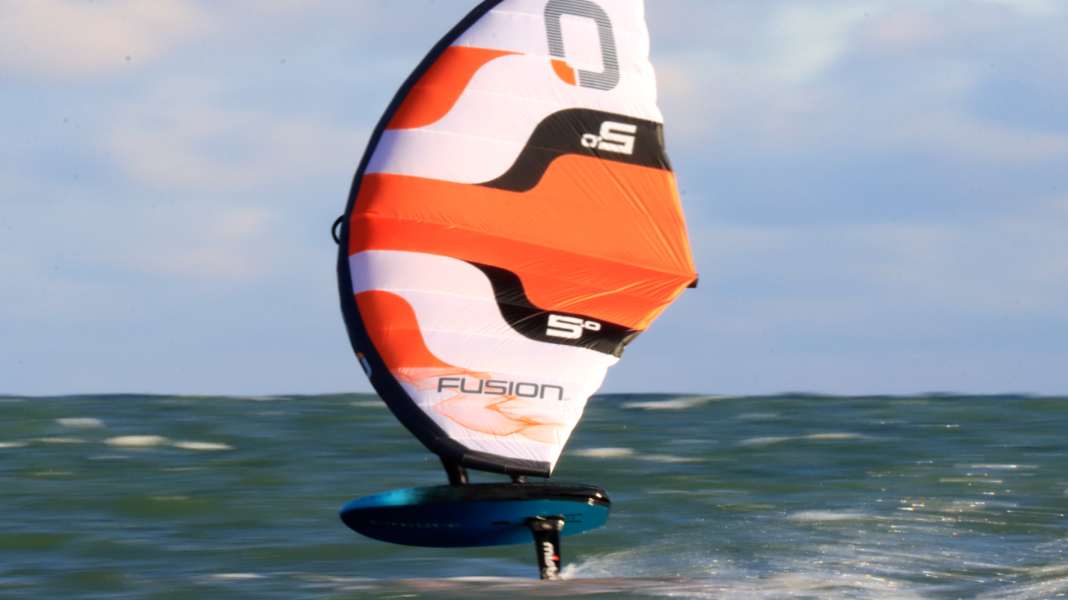
40 km/h - on a windsurfing or kiteboard, that's a speed that almost any hobby athlete can easily break. It's a different story on a foil, with most wingfoilers flying over the water at 30 to 35 kilometres per hour. But what does top speed depend on? And how can you squeeze a little more speed out of your own equipment? Here are the most important tips!
Wingfoiling with speed - how to tune your equipment
Regardless of which combination of wing, board and foil you use, it can be optimised in terms of speed with simple means. The main aim here is to improve control, which is often reflected in a higher top speed. Some safety aspects are also important so that you can accelerate without hesitation. Here are the most important aspects:
Wide stance
A slightly wider crotch width allows the board's transverse axis to be stabilised better, especially in gusty conditions. This can prevent or delay uncontrolled climbing of the board - an adjustment that also makes sense for hobby foilers.
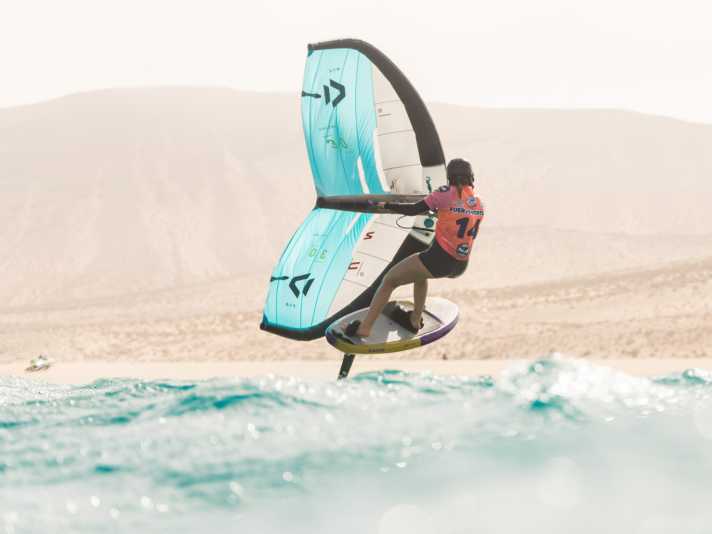
You are fast when you have a lot of control
For races - wide straps, no leash
If you are flying over the water "just for fun", you should use a board leash for safety reasons. However, as soon as you want to get down to business or even take part in races, it is advisable not to use a board leash. The reason: if you stall at full speed, you will usually fall in front of the board. If the board is connected to the pilot via a leash, the board quickly becomes a dangerous boomerang and is thrown behind the pilot (HERE we show you how to retrieve your board without a leash). It is also safer to adjust the foot straps a little larger so that you can slip forwards out of the straps if you fall and don't injure yourself.
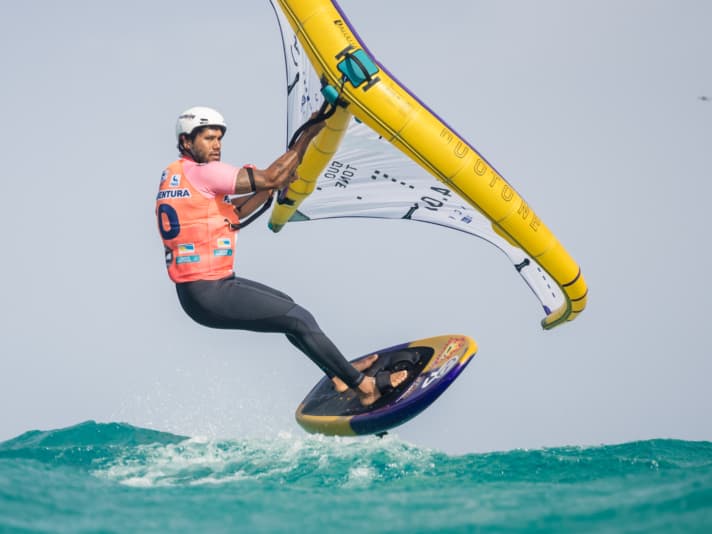
High filling pressure
The driving characteristics of the Wing can be noticeably changed via the inflation pressure. While the recommended inflation pressure for light winds can often be undercut by 1-1.5 psi for most models, the inflation pressure should be maxed out when it comes to control and speed. Background: The tighter the wing, the more stable the pressure point will normally be. And pressure point stability is reflected in control and therefore ultimately in higher speed.
Wingfoiling with speed - tips on riding technique
If you have ever watched the pros at the GWA Wingfoil World Cup, you may have noticed that many riders adopt a low body position during the races. In combination with the wide stance mentioned above, this results in a much more stable flying position, especially in gusty conditions.
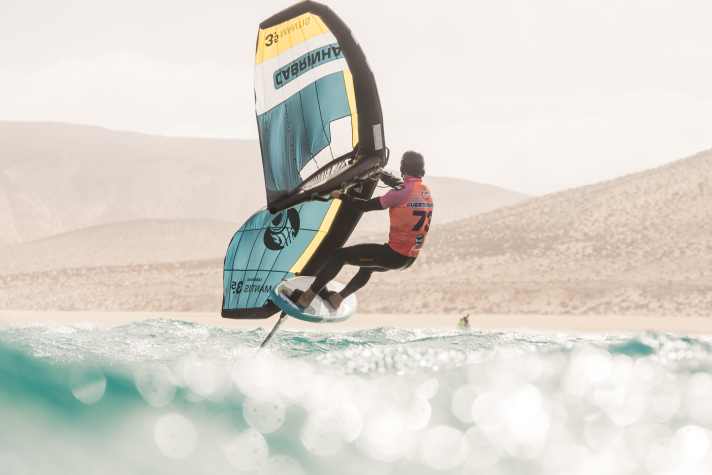
Choice of material
Of course, every material has a certain limit. Once this has been exhausted, a higher top speed is only possible with other components. Here are the most important adjustment screws:
Foil size - the smaller, the faster
The foil undoubtedly has the greatest influence on the final speed. The thinner the profile of the wings, the lower the resistance in the water and the faster (but also more sensitive to ride) the foil. The most important factor, however, is the size of the foil: the smaller the wings, the faster the foil. However, you should always bear in mind that switching to a smaller foil also means that you will have to accept a later take-off in light winds. However, as modern foils are usually modular in design, buying an additional front wing and possibly a back wing can significantly extend the range of use and speed.
Long masts
Foil masts should be as rigid as possible. With the widely used aluminium masts, this goal can usually only be achieved with a slightly thicker material, whereas carbon masts can be profiled a little thinner due to the material. For this reason, many carbon masts also have a lower resistance in the water, which is reflected in a higher top speed. However, for a difference of a few kilometres per hour, you pay a hefty extra price - so upgrading to a carbon mast is more of a tip for ambitious foilers who want to get a taste of competition. Upgrading to a long mast also makes much more sense for hobby racers. You can fly a little higher, which also prevents the edge of the board from getting caught in the water during chops. Nevertheless, you are less at risk of the foil coming to the surface in the wave trough and the current breaking off. Foil masts of 85 to 95 centimetres are ideal for sporty freeriding and racing. The extra control often results in a higher top speed.
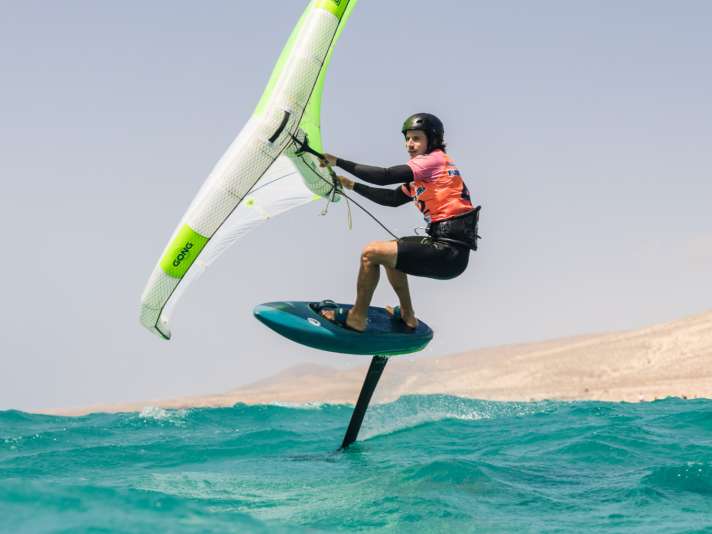
Measuring speed - with apps or smartwatches
Anyone who enjoys measuring (and improving) their own top speed can do so using either smartphone apps or smartwatches. Apps like Sports Tracker or WindsportTracker are available free of charge and are a great way to get started. All you need for the measurement is a waterproof case for your smartphone (e.g. from Aquapac). GPS trackers or smartwatches also work very well. We have tried out some of them in water sports - you can find the test reports here:

